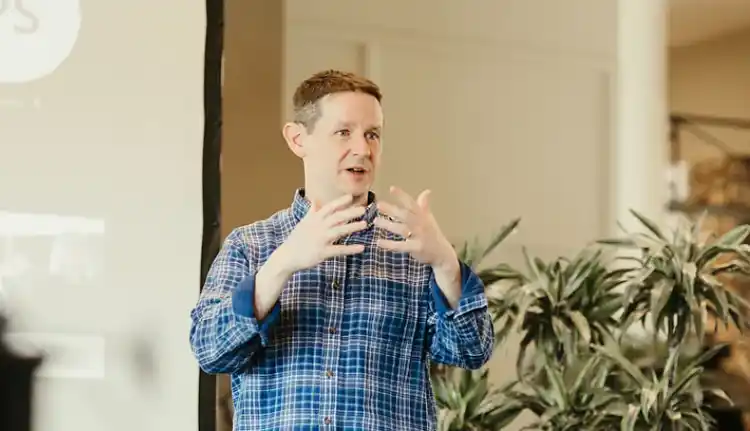Want to impress clients?
You have 90-seconds

Read time 3 minutes
In This Post:
- Client Journeys Must Adapt To The Attention Economy – Is Yours Primed To Capitalize Or Capsize On It?
- Questions To Consider For Your Firm’s Client Journey
Client Journeys Must Adapt To The Attention Economy – Is Yours Primed To Capitalize Or Capsize On It?
Attention! Attention!
Treat it like your most precious asset, because it is.
Any financial services firm re-engineering its advice experience or crafting a new client journey should pay close attention to the changing physics of attention.
The price advertisers pay for a standardized amount of attention (a blend of attention quantity and quality) has increased somewhere between 7- to 9-fold in the 20 years 1994 to 2014. 1
And that’s prior to the FAANGs really nailing the algorithms to hook your clients and monopolize their attention (see The Social Dilemma on Netflix). Likely, attention engineering has driven that price even higher since 2014.
"All our competitors in the attention economy are getting better at knowing what grabs attention, too. The consequence, Lehmann [author of a Danish study on attention] says, “is there’s less time for depth, because there’s so much other attractive stuff out there, also vying for your attention.”
Source: Vox.com, How the Internet is Fracturing Our Collective Attention
Your clients pick up their phones an average of 58 times per day.
- 70% of those screen sessions are less than 2 minutes in length.
- 25% are 2-10 minutes
- 5% (on a good day) are more than 10 minutes
“Our attention is being captured by devices rather than being voluntarily regulated. We are like a sailor without a rudder on the ocean — pushed and pulled by the digital stimuli to which we are exposed rather than by the intentional direction of our own mind.”
– Richard Davidson, neuroscientist at the University of Wisconsin Madison, as reported by Vox
Realize this doesn’t mean your clients’ ability to concentrate for extended periods is disappearing entirely. You need only look at stats on Netflix binge-watching to appreciate that.
It’s more the “floating on the ocean of digital stimuli” effect—some of us paddling with a bit of direction, others truly directionless—and when we spot something worthy of a deep dive, we can still dive deep. But triggering those deep dives is so much harder these days, because of the overwhelming quantity of highly tailored, compelling digital stimuli we compete against.
This attention fracturing has happened so gradually, the real danger for those of us (re)designing client journeys is we won’t think radically enough. We don’t think to ask ourselves or our teams a set of frame-breaking questions…questions that can help us innovate experiences that sing in today’s attention environment
Questions to consider for your firm’s client journey
So, let’s get the ball rolling. Here’s my list of punchy questions to force “out of box” thinking. Get out your client journey maps, assemble your team, and ask yourselves:
- How might we make this [specific journey point] 7 times shorter? Or, how might we create 7 times the client value out of it?
Why 7? Because that’s the bottom end of the 7- to 9-fold increase in the price of attention mentioned earlier. If that’s what the market is telling us about the price of attention, let’s imagine your hypothetical “attention buying budget” is flat…you’ve got to accomplish the same thing you did before with 1/7th the attention, or create 7 times the value with the same amount of attention. Or some combination thereof. The 7-fold size of the change should force some radical ideas. - How could we create a 90 second bouillon cube of insight and value creation for the client [at X specific journey point]?
Why 90 seconds? Because 75% of your clients’ screen sessions during the day last less than two minutes. What could you pack into 90 seconds? How engaging could it be? What insight could you gather about your client? What tailored value could you deliver in that time, based on that insight? - (Follow-on to #2) What kind of Moment of Truth could that 90 second experience lead to?
Moments of Truth are the rare occasions where your client has an opportunity to reach an epiphany about themselves (and thereby your brand or your advisor as the orchestrator of that moment). Now, Moments of Truth in wealth management typically take more than 10 minutes of client attention. We know those are rare. So the stimuli to spark that level and quality of attention needs to be good.
Ahead of these frame-breaking exercises, it’ll help to get your team to do a bit of reading and research in advance, to open their eyes to what’s possible with the latest in decision science, behavioral economics, gamification, and human centered design. A fine place to start that research is right here on the Capital Preferences website—the science page and our latest insights. Other sources of inspiration below.
Oh, and look at that…I’ve just gobbled up one of your 2-10 minute screen sessions. Thanks for your attention – I know how precious it is.
Here are other sources of inspiration for innovating your customer experience:
- International Design for Experience Awards
- UK UX Awards
- Forbes: 20 Fresh Examples of Customer Experience Innovation
- DEO’s work examples
- IDEO’s blog
Works Cited
- Harvard Business School working paper. Thales Texeira. The Rising Cost of Consumer Attention: Why You Should Care and What You Can Do About It
- https://blog.rescuetime.com/screen-time-stats-2018/
